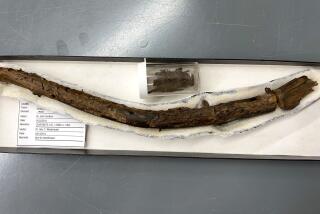A Season of New Possibilities : Perennially Yours
In the spring, a gardener’s fancy turns to thoughts of what to plant. For the flower garden, one can take advantage of the many perennials that are debuting at nurseries this year, and for the vegetable garden, one can discover the European varieties that are available for the first time in seed catalogues.
FLOWER GARDENS MIGHT never look the same now that perennial flowers have moved into Southern California. Where once rows of bedding plants stood as uniformly as a field of corn, there are now cathedral-like spires, great billowing mounds and spreading carpets of flowers--a much more complicated and interesting composition. Where a single color might have predominated, a great profusion of colors are to be found. Where green was the only color of foliage, there are now zesty grays as well as every shade of green, including chartreuse, and a goodly number of variegated leaves.
The perennials in this wide, long border in San Marino (growing with spring-flowering annuals) might be called the tried and true. For the neophyte, these are the best bets, but the advanced gardener shouldn’t forget them, because they are considered by many to be the best, period.
Most perennials are planted for the long haul--they can last several years, but to do so they require special care. However, those used here are most often planted right along with the marigolds and petunias in the spring--as if they were simply annual bedding plants--and then pulled out with them in the fall. This means that there is no need to worry about spending extra time preparing the soil, which is usually required because perennials are in the ground for so many years. There is no need to worry about how, or when, they should be cut back, which is something that must be done with most perennials, or when they should be divided, also required by many perennials. In the meantime, they will make the spring and summer garden a lot spicier and perhaps whet the appetite for the more exotic perennials that are just now becoming available. Local nurseries carry all the perennials in this garden in everything from one-gallon cans for the impatient to little packs of six.
Note that perennials shouldn’t be planted in rows as bedding plants are, but in drifts. Clusters of several spotted here and there, tall alternating with low--this contributes much to the undulating, almost natural effect. Planted now, most perennials will sprint into spring and come into full flower sometime in May or June, lasting most of summer. Should they stop, simply cut the flowers off and shorten the plants a tad, and they will begin all over again--that’s what makes them perennials. And should you decide to take the plunge and treat them as true perennials, simply leave them where they are, and see if they live up to their name.






